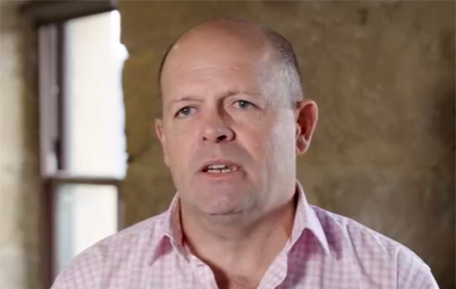Renewables giant has big plans in Australia
If Australia is to meet its long-term climate targets it will need large-scale renewable energy developers like ACEN Australia, as well as financiers who are willing to support them.
ACEN, which is backed by Philippines conglomerate Ayala Group, is among a cohort of foreign investors from countries including France, Spain, the UK and China, who are injecting much-needed capital to build out Australia’s renewable generation capacity.
ACEN Australia’s New England Solar project in New South Wales, which began operating in 2023, is the biggest solar facility in the state participating in the National Electricity Market and the company has a long-term project pipeline with potential to add 13 gigawatts (GW) of renewable power to Australia’s grid.
That makes it a significant player in the country’s clean energy transition, which will require an estimated 57 GW in new grid-scale renewables capacity by 2030 to replace the country’s ageing coal-fired plants, according to the Australian Energy Market Operator*.
“ACEN saw an opportunity in coming to Australia,” says David Pollington, ACEN Australia’s Managing Director. “We’re the second biggest market that they’re investing in and there’s every likelihood we may even get bigger than the home country.”
The group’s projects are spread across wind, solar, batteries and pumped hydro to create a balanced portfolio. “That diversity of technologies will give us access to resources that occur at different times,” Pollington says.
In particular, the short-term energy storage offered by batteries (typically 2-4 hours) and medium-term storage from pumped hydro (around 12 hours) will be critical in providing reliable dispatchable power to back up the inherent intermittency of wind and solar.
“Australia has one of the most geographically dispersed grids in the world, so the distribution of these projects and project types will allow for energy to be delivered across that grid,” says Pollington, who has three decades of experience in Australia’s renewables industry.

ACEN Australia Managing Director David Pollington. (Josh Wall)
Westpac recently provided a $75 million loan for ACEN Australia to help progress its roster of projects, extending a relationship which began with the inception of the New England Solar project in 2017.
“ACEN Australia is a key partner in helping us to deliver our strategy to finance more renewable energy projects,” says Jason Bowring, a relationship banker with Westpac who specialises in the infrastructure and energy sectors.
Westpac has been the top financier to Australian renewable energy projects in the past twelve months, according to data compiled by IJGlobal. Among other deals this year the bank took part in a $1.1 billion debt financing for French-based company Neoen to help it progress eight renewable energy projects across Australia.
“We want to continue to be a leader in this space,” says Bowring. “What we really value is the ability to go out and speak to the management teams within renewable energy developers and investors and seek to understand what problems they are trying to overcome.”
ACEN Australia’s Pollington says the support of local banks is critical in adding credibility to projects, while adding that there were challenges.
“Quite rightly, financiers are keen to see and understand projects – and we’re talking about projects with long lead times and lots of moving parts.” They often involve new technologies that may not be well understood, he adds.
Banks also need to make an assessment on the long-term income stream of a project based on their assessment of future electricity prices and what power purchasing agreements might be in place.
Still, Pollington and Bowring agree that the Australian renewables market remains attractive to both local and international investors and developers.
“Part of that is the sheer scope of investment that's needed for the decarbonisation of the Australian economy and environment,” Pollington says. A federal government program to underwrite 32 GW in new renewable generation capacity by 2030 will require an estimated investment of around $67 billion.
The country is also blessed with a wealth of prospective locations to develop wind and solar assets and, while the regulatory environment can be challenging, Australia also offers a politically stable place to do business.
Hobart-based ACEN Australia is currently expanding the capacity of its New England Solar facility and has plans to add battery storage. It has also started work on another giant solar project at Stubbo in the NSW Central West Orana region.
The New England and Stubbo solar facilities are both located within Renewable Energy Zones set up by the NSW government. These aim to cluster new wind and solar projects in a geographical location and connect them to the grid with new transmission lines.
These sort of government initiatives, along with a stronger focus on building the right transmission infrastructure, are crucial to enabling an efficient energy transition, Pollington says.
Equally important is making sure the local communities nearby these giant projects understand the objectives and buy in to the potential opportunities they create. Pollington admits that can be a challenge and is not something that can be rushed.
“I don’t like the term ‘social licence’ because to my mind that means you’re tolerated rather than seen as a valued member of that community,” says Pollington.
“Our teams that are out there in the communities try to build relationships with landowners and with community members and seek to explain and look for opportunities to see where there's a mutual benefit.”
* Source: The Australian Energy Market Operator's Draft 2024 Integrated System Plan.

